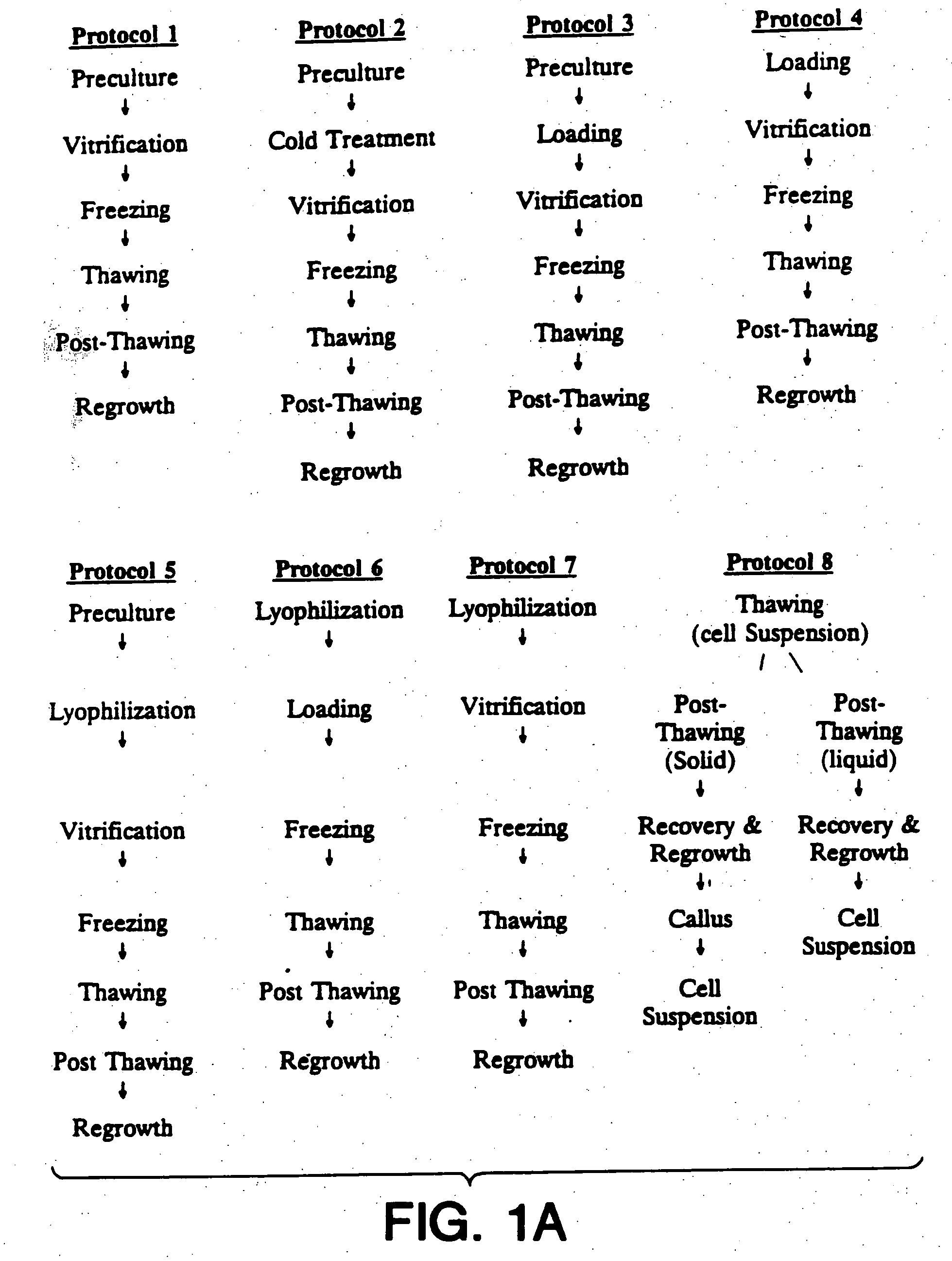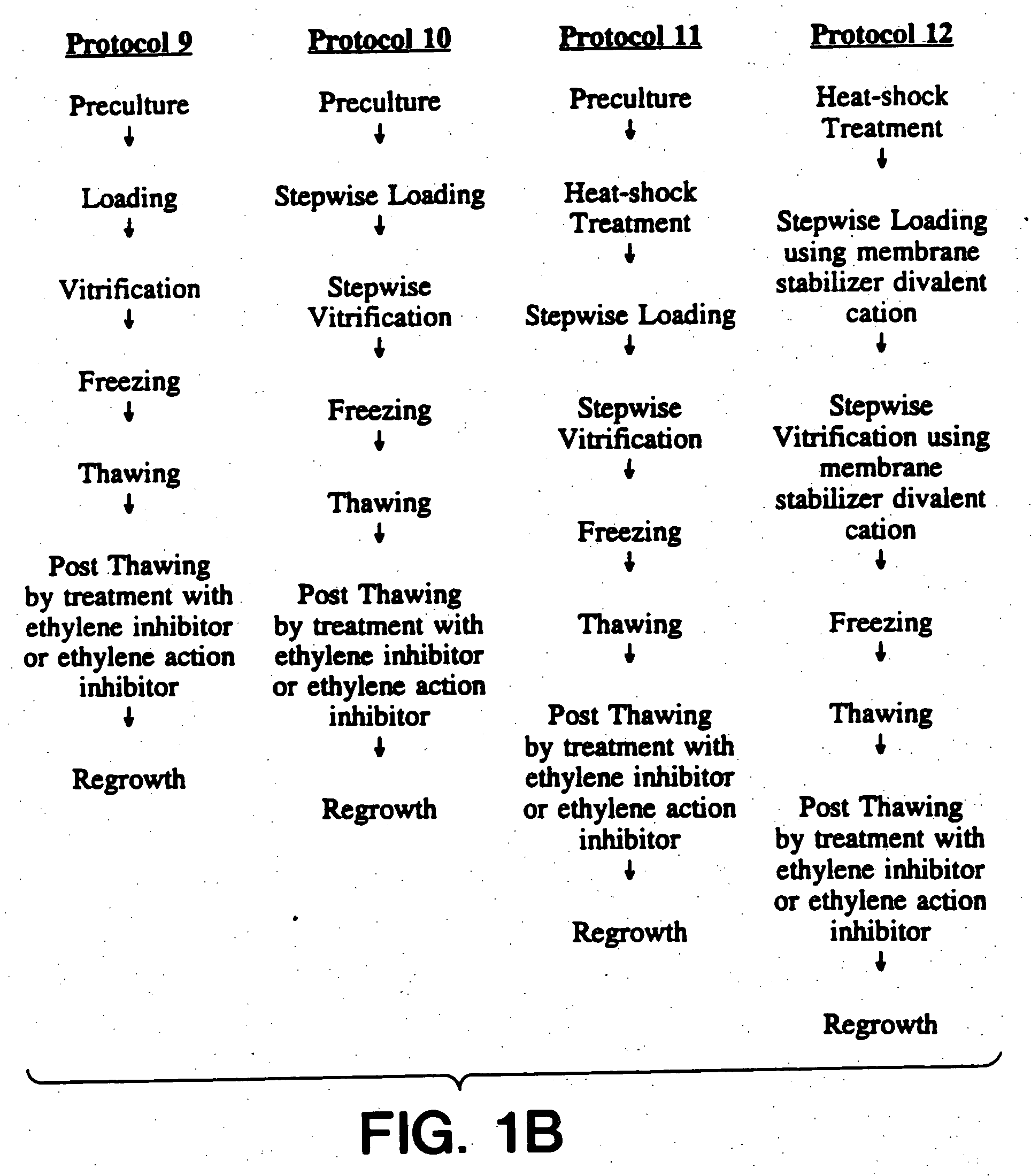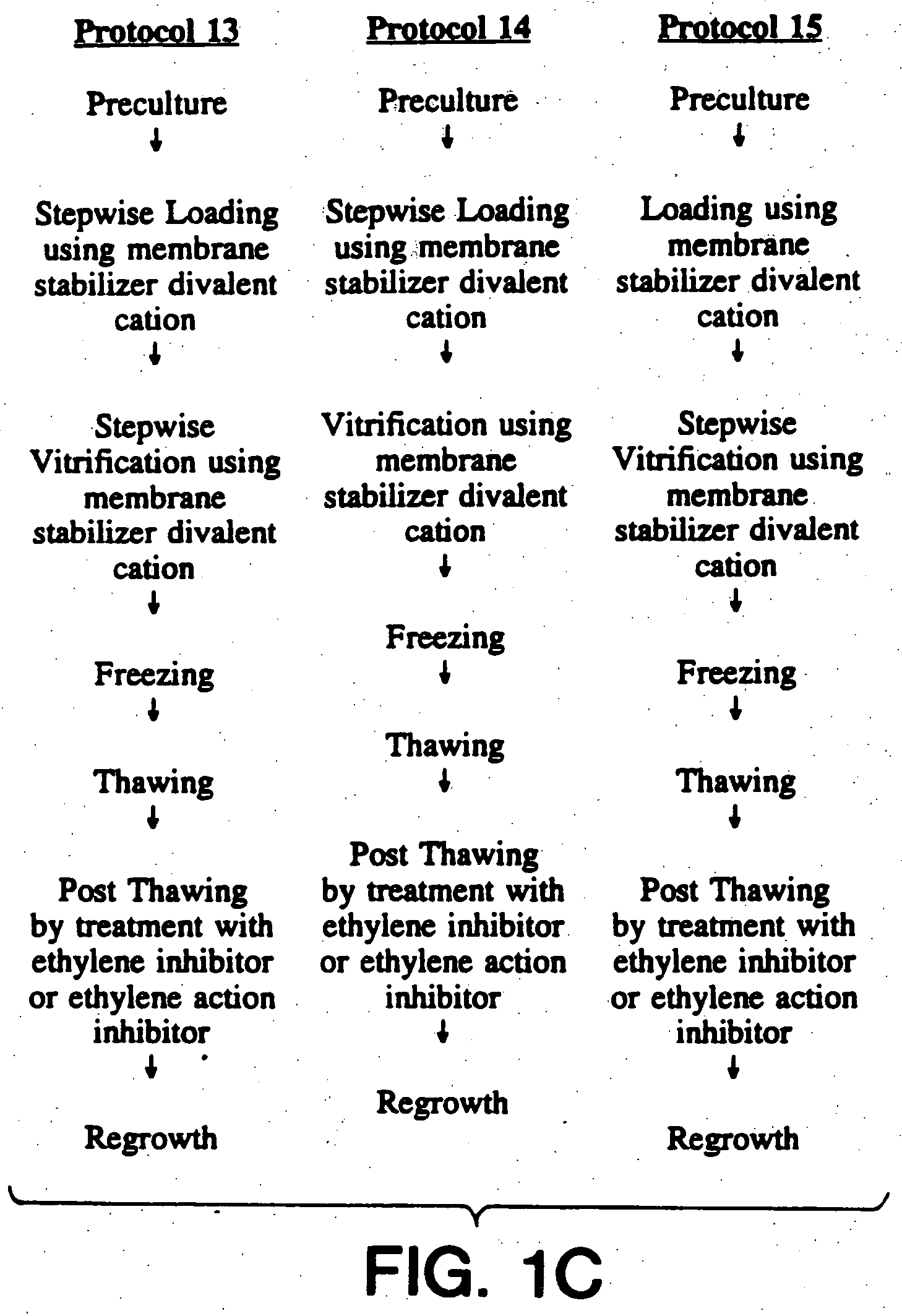Cryopreservation of plant cells
a plant cell and cryopreservation technology, applied in the field of cryopreservation of plant cells, can solve the problems of high loss risk, plant cell cryopreservation is far from routine, and most biological materials, including plants, cannot survive freezing and thawing from cryogenic temperatures without cryoprotective agents and procedures
- Summary
- Abstract
- Description
- Claims
- Application Information
AI Technical Summary
Benefits of technology
Problems solved by technology
Method used
Image
Examples
example 1
Callus Initiation and Proliferation
[0100]Taxus needles were collected from wild and cultivated plants. Plant material was washed in a diluted soap solution, rinsed extensively with distilled water and surface sterilized in a chlorous solution (1% hypochlorite, pH 7) for 10 minutes. Under sterile conditions, the material was rinsed 3 times with sterile distilled water. Needles were cut in a 1% polyvinylpyrrolidone (PVP) solution with 100 mg / L ascorbic acid. Needles were placed with the cut end in semisolid medium E and incubated at 24° C.±0.1° C. in the dark. Cultures were monitored daily and those with signs of contaminating microorganisms were discarded. Substantial callus formation was observed and the callus was separated from the explant by 20 days and placed on the various callus proliferation media listed in Table 4. Calli of Taxus chinensis were transferred to medium D (Table 4). This procedure resulted in callus induction in over 90% of the explants. The same procedure was ...
example 2
Suspension Initiation and Growth of Suspended Cells
[0101] One gram of callus material was aseptically inoculated into a 125 ml Erlenmeyer flask containing 25 ml of liquid medium (Table 4). The flask was covered with a silicone foam cap and placed on a gyratory shaker at 120 rpm at 24° C. in darkness. Suspension cultures were formed in approximately 3-10 days. Medium exchanged was initiated by suction filtering the flask contents through a buchner funnel containing a miracloth filter and resuspending all the biomass in fresh medium. One to two grams of cells were transferred into a 125 ml flask containing 25 ml of fresh medium weekly. Typical growth rates and cell densities achieved in suspension cultures of representative species are listed in Table 5.
TABLE 5Growth Profile of Taxus CellsDry WeightFresh WeightDry Wt.Fresh Wt.SpeciesDoubling TimeDoubling TimeDensityDensityT. brevifolia2.0 days3.5 days20 g / L400 g / LT. baccata2.0 days6.0 days15 g / L220 g / LT. chinensis2.5 days4.5 days20...
example 3
Viability of Taxus Cells After Preculturing with Mannitol
[0104] Six to 7 day old suspension cultures of Taxus cells were harvested and resuspended into fresh growth medium containing 0.16M mannitol, 0.22M mannitol, 0.33M mannitol or 0.44M mannitol.
[0105] After 3 days of incubation in growth medium with mannitol, cells were cold acclimated at 4° C. for 3 hours. Acclimated cells were harvested and transferred to 4 ml cryovials containing a cold vitrifying solution of 40 / 30 wt % ethylene glycolisorbitol in media. The vials were incubated at 4° C. for 3 minutes and frozen by immersion into liquid nitrogen. Vials were maintained in liquid nitrogen for at least 10 minutes before use in the thawing experiments.
[0106] Vials of frozen cells were removed from liquid nitrogen storage and agitated at 40° C. until the contents are liquefied (1-2 minutes). The liquefied cells were then washed 5 to 6 times with sterile media containing 1 M sorbitol, 3 times with media containing 0.5 M sorbitol ...
PUM
 Login to View More
Login to View More Abstract
Description
Claims
Application Information
 Login to View More
Login to View More - R&D
- Intellectual Property
- Life Sciences
- Materials
- Tech Scout
- Unparalleled Data Quality
- Higher Quality Content
- 60% Fewer Hallucinations
Browse by: Latest US Patents, China's latest patents, Technical Efficacy Thesaurus, Application Domain, Technology Topic, Popular Technical Reports.
© 2025 PatSnap. All rights reserved.Legal|Privacy policy|Modern Slavery Act Transparency Statement|Sitemap|About US| Contact US: help@patsnap.com



